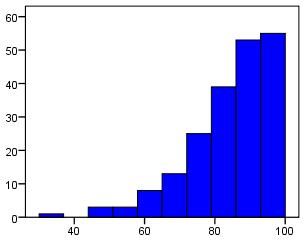Floor Effect Example

In research a floor effect aka basement effect is when measurements of the dependent variable the variable exposed to the independent variable and then measured result in very low scores on the measurement scale.
Floor effect example. In layperson terms your questions are too hard for the group you are testing. This is even more of a problem with multiple choice tests. For example the distribution of scores on an ability test will be skewed by a floor effect if the test is much too difficult for many of the respondents and many of them obtain zero scores. Also called a basement effect.
If only a small amount of the incoming freshmen are capable of making any attempt at the questions the test has a very high. The inability of a test to measure or discriminate below a certain point usually because its items are too difficult. This lower limit is known as the floor. A floor effect is when most of your subjects score near the bottom.
Suppose this test consists of five difficult math problems. Let s talk about floor and ceiling effects for a minute. In statistics a floor effect also known as a basement effect arises when a data gathering instrument has a lower limit to the data values it can reliably specify. There is very little variance because the floor of your test is too high.
This could be hiding a possible effect of the independent variable the variable being manipulated.


















